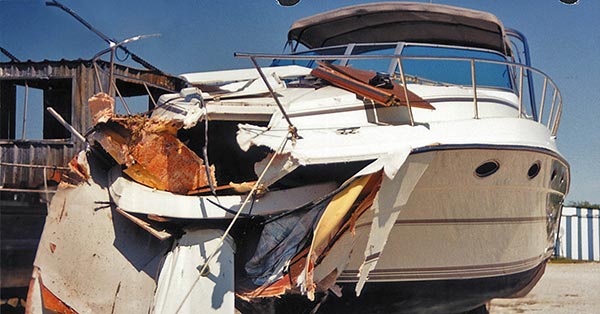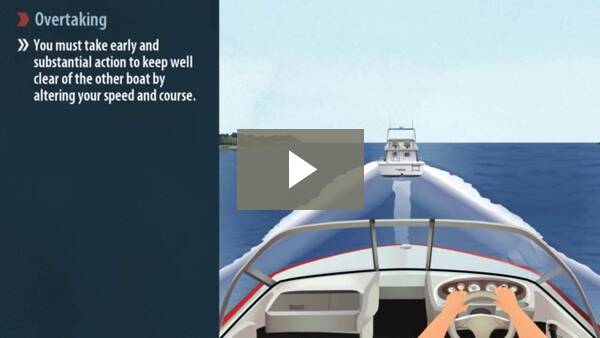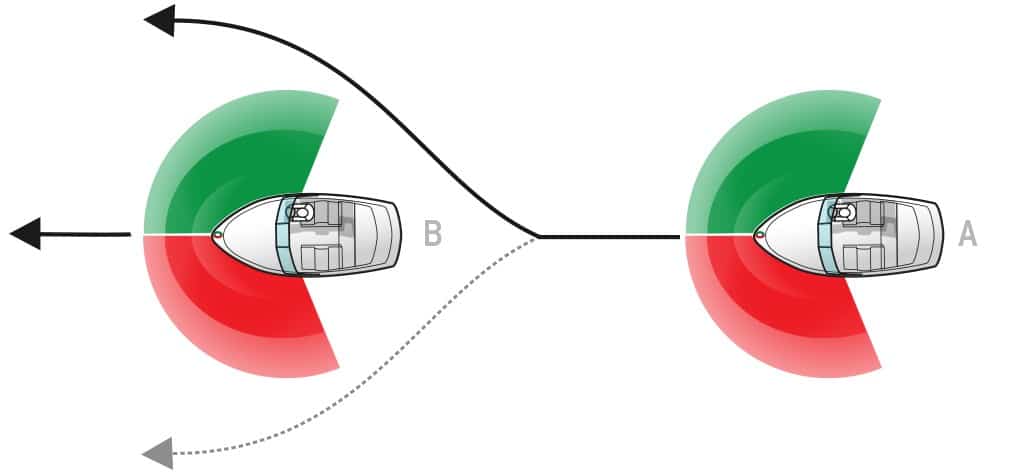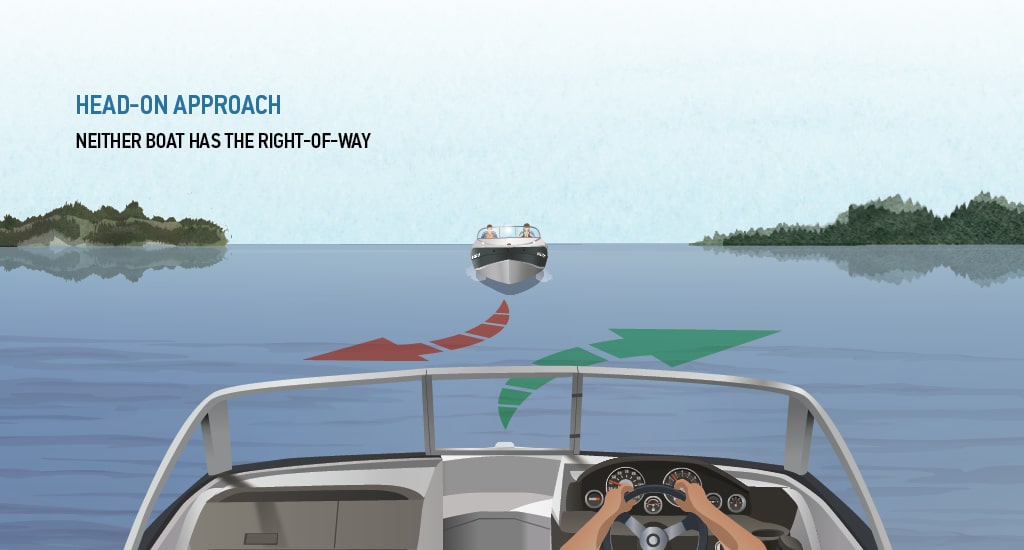One Boat Is Overtaking Another Which Boat Should Stand on
Which boat should stand-on if one boat is overtaking another. What do these lights tell you.
You are the stand-on vessel.

. Overtaking Another Boat. CAT IIT JEE Bank Exams. One boat is overtaking another which boat should stand on.
The one overtaking and the one being overtaken. The former is the give-way vessel and the latter is the stand-on vessel. 1 What should a motorboat operator do when approaching a sailing vessel head.
To understand overtaking it is essential to understand the names given to the boats clearly. When one vessel is overtaking another which one is the stand-on vessel. When a sailboat is the overtaking vessel she.
In seas navigation collision regulations state that Give-Way vessel is the one who overtakes the Stand-On vessel. The sailing vessel is the stand-on vessel. The vessel being overtaken is always the stand-on vessel.
The boat that overtakes another boat is the give-way vessel. The rules of the road specify that the overtaking boat is the give way vessel and the boat being overtaken is the stand on vessel. A sailing vessel is crossing your path and you must swerve to avoid it.
A power-driven vessel is approaching head-on but you have the right of way. The vessel wanting to overtake is the give-way vessel while the other is the stand-on vessel. We keep the wall between us as we go.
The boat which is overtaken must give way to the boat which is overtaking and should stand on until it is completely overtaken. Vessel A is overtaking and is the give-way vessel. To each the boulders that have fallen to each.
When a sailboat is the overtaking vessel she. Which boat should stand on. The former is the give-way vessel and the latter is the stand-on vessel.
You continually move forward on either side. As the give-way vessel A must take EARLY and SUBSTANTIAL action to keep clear of the stand-on vessel B. One boat is overtaking another.
You see red and white lights on another boat. Any vessel that is overtaking another vessel is required to maintain clear of the vessel that is being overtaken. When overtaking a boat at night youll likely see the stern light of the stand-on vessel instead of the navigation lights.
Which boat should stand-on if one boat is overtaking another. The former is referred to as the give-away vessel whereas the latter is referred to as the stand-on vessel. When would the sailboat be the give way vessel.
When one boat is overtaking another which is the stand-on vessel. And on a day we meet to walk the line and set the wall between us once again. The vessel that is overtaking another vessel is the give-way vessel regardless of whether it is a sailing vessel or a power-driven vessel.
This is because the vessel that is overtaking another vessel is the give-way vessel and the vessel being overtaken is a stand-on vessel. Situation Reaction Test - Verbal Reasoning - Mental Ability. A boat planning to overtake pass is called the burdened or give way vessel while the guy up front is considered the privileged or stand on vessel he has the right of way.
Before passing the burdened vessel should ask and receive permission from the boat up ahead. What sound signal should you hear. This rule applies even if the overtaking vessel is propelled by wind oars or rubber band paddlewheel.
And some are loaves and some so nearly balls we have to use a spell to make them balance. If a sailboat and a motorboat are both underway when is the sailboat the give-way vessel. Really all it comes down to is passing the other boats stern wake as early as possible leave plenty of room dont make too much of a wake and give a friendly wave.
This also applies if a sailboat is overtaking a powerboat. The give-way vessel must take early and substantial action in order to avoid the stand-on vessel which should maintain its course and speed. The boat that overtakes another boat is the give-way vessel.
When one boat is overtaking another boat these are the rules. Any vessel overtaking any other vessel must keep out the way of the vessel being overtaken. One prolonged blast plus two short blasts every two minutes.
But at spring mending-time we find them there. The Give-Way vessel is the one who is taking the replacing operator of the Stand-On vessel. AIEEE Bank Exams CAT.
Vessel A must blow one short blast and alter course to starboard or blow two short blasts and alter course to port and Vessel B. Overtaking another vessel means getting close to its stern. Any vessel overtaking any other vessel must keep out the way of the vessel being overtaken.
The former is referred to as the give-away vessel whereas the. The boat which is overtaken must give way to the boat which is overtaking and should stand on until it is completely overtaken. Into the wind or current.
In some cases such as overtaking another in narrow channels where theres not enough room for two boat side by side both boats must give way and yield the right of way. When two boats are in open water passing or overtaking another boat is no big deal as long as it is done respectfully. If one boat isnt adhering to this rule then they may get into an accident with their fellow boaters.
I let my neighbor know beyond the hill. However if one boat is overtaking another in open water with plenty of room for both to go around each other then the boat being. Although the sailboat is usually the stand-on vessel this case is an exception.
The correct answer is the boat who is not overtaking the other or the stand-on vessel. The boat being overtaken is the stand-on vessel. Vessel B is the stand-on vessel.
The vessel that wants to overtake is named the give-way vessel while the one to be overtaken is the stand-on vessel. Be aware that both boat operators have a responsibility to avoid a collision. You must give way to the other vessel.
Any vessel that is overtaking another vessel is required to maintain clear of the vessel that is being overtaken. If both vessels are power-driven sound signals are required. The vessel that overtakes is the give-way vessel and it must move to ward off collisions.
This rule applies even if the overtaking vessel is propelled by wind oars or rubber band paddlewheel. You are operating a powerboat at night. A sailboat is underway in the fog.
The boat being overtaken is the stand-on vessel. This rule applies regardless of whether either boater has a powerful engine or sails for propulsion.

Sailing Boating Yachting Vacation Travel See Our Vacation Rentals At Https Www Avacationrental4me Com Boat Navigation Sailing Basics Boat Safety

Boat Navigation In Canada Boatsmart Knowledgebase

Boat Navigation In Canada Boatsmart Knowledgebase

Saltwater Serious Boat Saltwater Yacht

Right Of Way Rules For Boating Formula Boats Boat Motor Boats Power Boats

Boat Navigation In Canada Boatsmart Knowledgebase

Pin By Recep On Off Boating We Go Boat Navigation Boat Safety Boat

How To Dock A Single Engine Inboard Outdrive Boat Stern First Boat Dock Canal

Operating Astern Propulsion One Short Blast To Mean I Intend To Leave You On My Port Side Two Short Blasts To Mean I Boat Safety Sailing Boat Navigation

Collisions Can Be Prevented Easily If Every Vessel Operator Fulfills Three Major Responsibilities Practice Good Seamanship Keep A Pro Vessel Boat Safety Power








Comments
Post a Comment